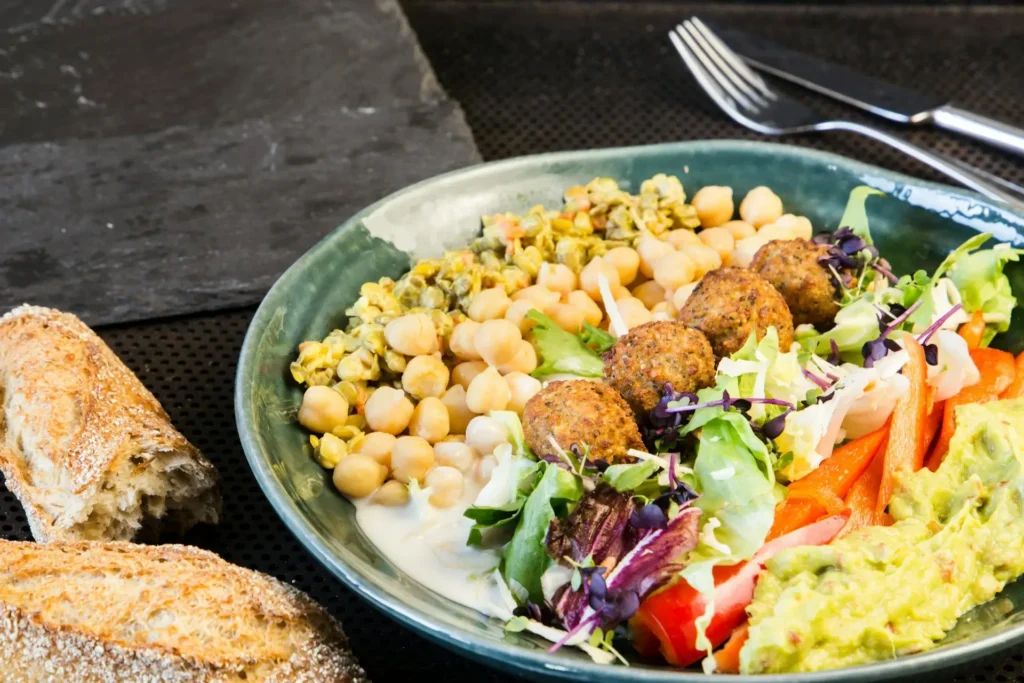Imagine traveling across a region brimming with ancient cultures, breathtaking landscapes, and some of the most exciting and diverse cuisines in the world. The Middle East offers a gastronomic adventure like no other. From savory stews to mouth-watering desserts, each country brings its unique flavors, textures, and cooking techniques to the table. Whether you’re a seasoned traveler or someone who enjoys exploring new culinary landscapes, the Middle East’s food trail is one you don’t want to miss.
In this ultimate guide, we’ll take you on a journey across the Middle East, uncovering the must-try dishes from each country. From aromatic kebabs to rich stews, get ready to experience the tastes that define the region’s diverse culinary heritage.
The Flavors of the Middle East: A Culinary Overview
The Middle East is often referred to as the “Cradle of Civilization,” and its food reflects the deep history, rich culture, and varied landscapes of the region. With influences from Africa, Europe, and Asia, Middle Eastern cuisine is as diverse as it is flavorful. It’s not just about eating; it’s about experiencing the traditions and stories embedded in each dish.
In the Middle East, food is more than just sustenance—it’s a celebration of hospitality, family, and culture. Whether you’re in a bustling souk or enjoying a meal in a remote village, food brings people together. The cuisine emphasizes fresh, healthy ingredients such as olive oil, herbs, grains, and vegetables, along with meats like lamb, chicken, and beef. Aromatic spices like cumin, cinnamon, and turmeric are commonly used to create bold, complex flavors.
Let’s dive into what makes the Middle Eastern food scene so compelling and explore what each country has to offer.
What to Eat in Each Middle Eastern Country
1. Saudi Arabia: A Taste of the Arabian Peninsula
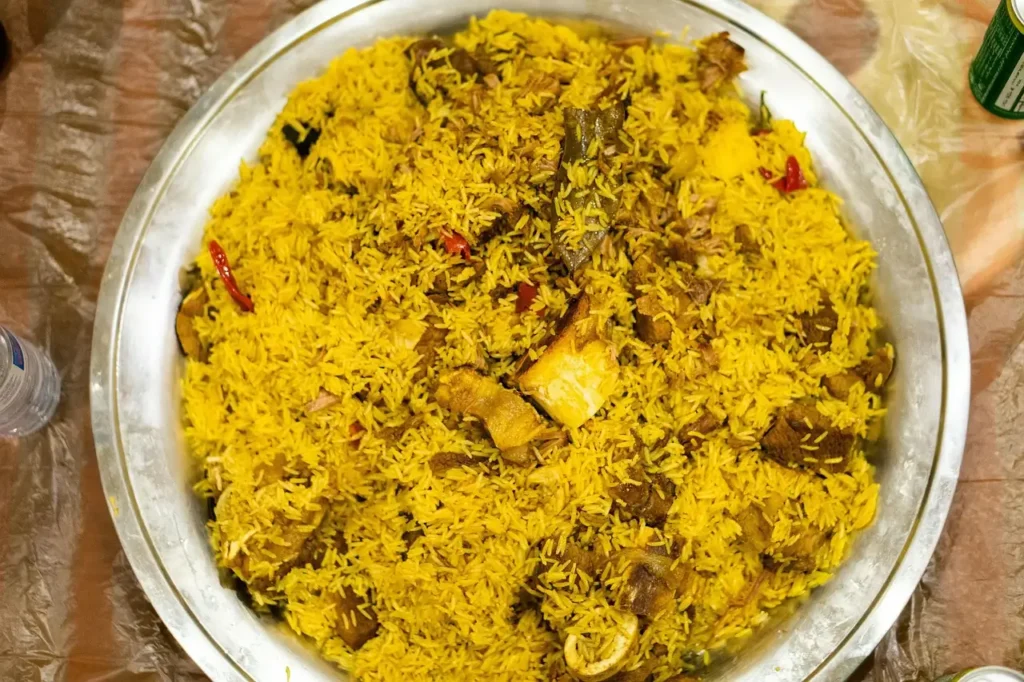
In Saudi Arabia, food is a reflection of the country’s rich desert culture, where communal meals are often enjoyed with friends and family. Saudi cuisine is built around rice, lamb, chicken, and spices. If you find yourself in Saudi Arabia, these are the must-try dishes:
- Kabsa: Known as the national dish, Kabsa is a hearty rice dish often cooked with lamb or chicken, seasoned with cinnamon, black lime, cloves, and bay leaves. It’s the perfect balance of savory and aromatic.
- Mandi: This rice dish is similar to Kabsa but cooked in an underground oven, giving the meat a smoky flavor that you won’t find anywhere else. It’s often served with lamb, chicken, or goat.
- Samboosa: These crispy, fried pastries are filled with spiced meat or vegetables. They’re a popular snack, especially during Ramadan.
Why Try It? The fragrant, spice-rich rice dishes like Kabsa and Mandi are true reflections of the Saudi culinary tradition, offering a savory depth that connects you to the country’s history.
2. Lebanon: Mediterranean Bliss with a Middle Eastern Twist
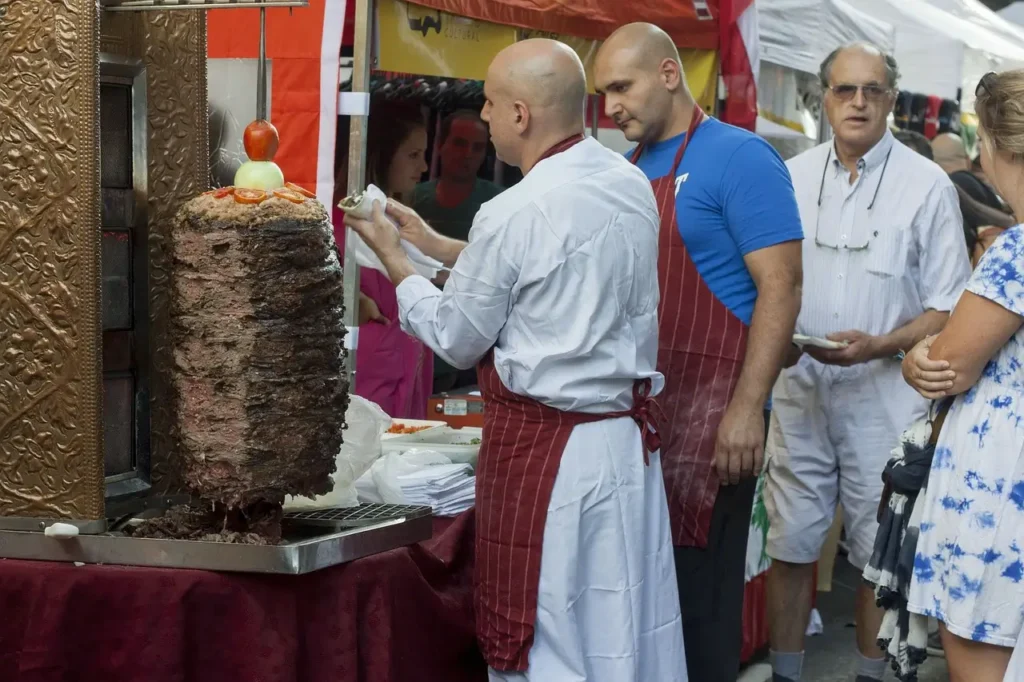
Lebanese cuisine is an exquisite mix of Mediterranean freshness and Middle Eastern boldness. Known for its fresh vegetables, herbs, olive oil, and lean proteins, Lebanese food emphasizes light, healthy eating while still offering plenty of flavor.
- Hummus: This creamy dip made from mashed chickpeas, tahini, garlic, and olive oil is a classic appetizer, perfect with pita bread.
- Shawarma: Marinated meat (usually lamb, chicken, or beef) is slow-cooked on a vertical rotisserie and served in pita bread with fresh vegetables and tahini sauce.
- Tabouleh: A refreshing salad made with parsley, tomatoes, onions, and bulgur, dressed with olive oil and lemon juice.
- Baklava: A sweet pastry made with layers of filo dough, honey syrup, and crushed pistachios. It’s the perfect ending to a Lebanese meal.
Why Try It? Lebanese food is both vibrant and healthy, featuring a range of flavors that showcase the region’s connection to the Mediterranean. The balance of fresh vegetables and bold seasonings makes it an unforgettable culinary experience.
3. Jordan: Hearty Flavors of the Desert
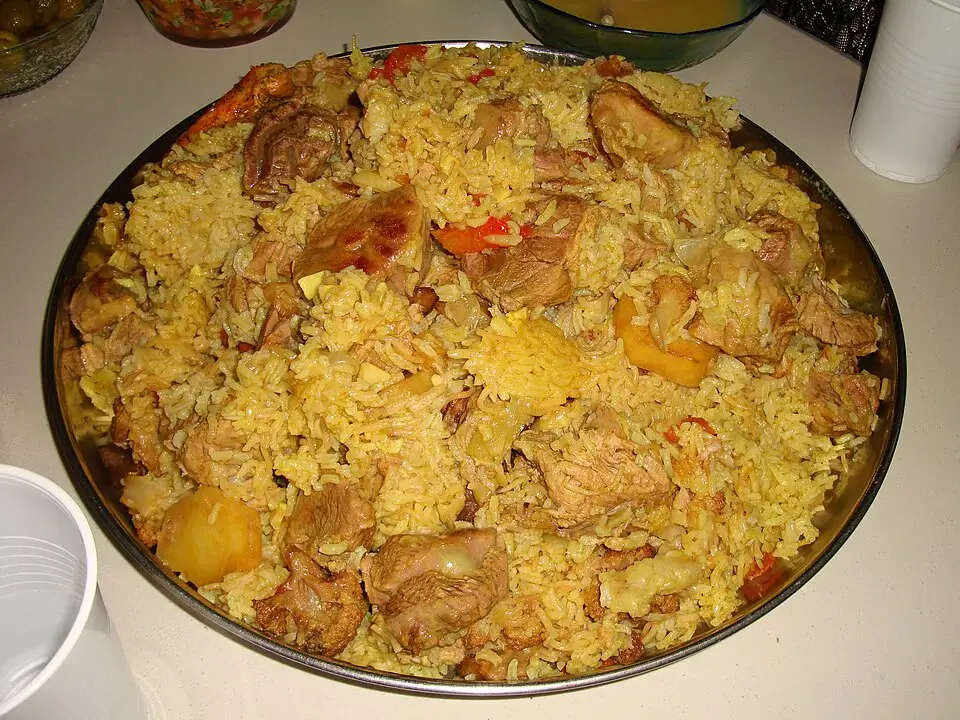
Jordanian food is hearty and often prepared in large quantities for family gatherings. This is comfort food at its best, drawing from Bedouin traditions and regional influences.
- Mansaf: Often considered the national dish of Jordan, Mansaf is a rich dish made with lamb, yogurt, and rice, garnished with almonds and pine nuts. It’s perfect for a festive occasion or a family gathering.
- Zarb: A traditional Bedouin dish made by slow-cooking meat and vegetables in an underground oven. The resulting flavors are smoky and tender.
- Maqluba: Meaning “upside-down,” Maqluba is a rice dish with vegetables and meat, flipped over when served to reveal its beautiful layers.
Why Try It? Mansaf is more than just a dish—it’s a symbol of Jordanian hospitality. This flavorful dish is typically served to guests as a sign of respect and tradition, making it a must-try when in Jordan.
4. Egypt: Flavors of Ancient Civilization
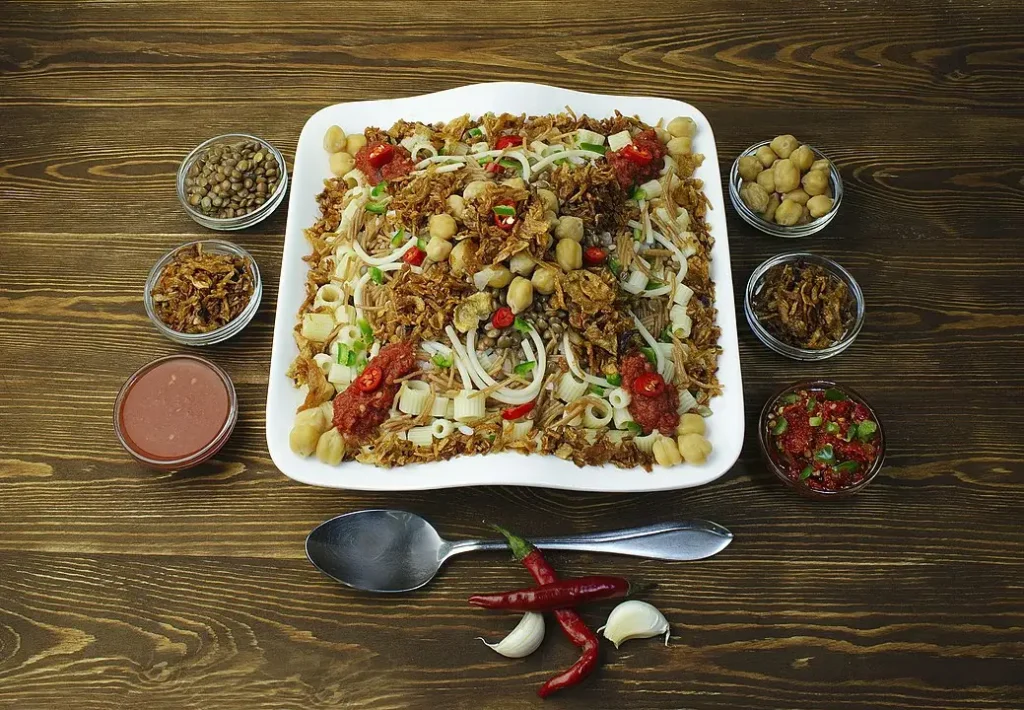
Egyptian cuisine is influenced by both its ancient past and its location at the crossroads of Africa and the Middle East. The use of beans, vegetables, and grains is widespread, making it easy to sample a variety of dishes that highlight Egypt’s rich history.
- Koshari: This hearty dish is a mix of rice, lentils, pasta, chickpeas, and fried onions, all topped with a spicy tomato sauce. It’s the ultimate Egyptian comfort food.
- Ful Medames: A dish made from slow-cooked fava beans, typically eaten for breakfast with bread and olive oil. It’s a staple in Egyptian homes.
- Mahshi: Vegetables such as zucchini, eggplant, and peppers are stuffed with rice and meat, then cooked in a flavorful tomato sauce.
Why Try It? Egyptian food offers a deep connection to the region’s past, using ingredients that have been staples in the diet for thousands of years. Dishes like Koshari and Ful Medames show how simple ingredients can be transformed into hearty, flavorful meals.
5. Iran: Persian Perfection
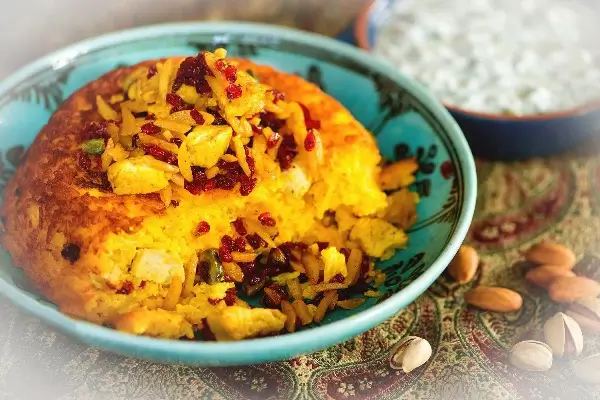
Iranian cuisine is as sophisticated as the country’s history, with a perfect balance of flavors and textures. Persians are known for using fresh ingredients like pomegranates, saffron, and herbs, creating dishes that are rich yet subtle.
- Fesenjan: A luxurious stew made from pomegranate paste and ground walnuts, typically cooked with duck or chicken. The rich, sweet-tart sauce makes it a standout dish.
- Kebab: Persian kebabs are iconic, often served with fragrant saffron rice and grilled vegetables. The combination of tender meat and smoky char is irresistible.
- Tahchin: A savory rice cake made with yogurt, saffron, and chicken. It’s baked to create a crispy, golden crust on the bottom.
Why Try It? Persian food offers a unique combination of sweet and savory flavors, with ingredients like pomegranate and saffron adding a depth that’s hard to find elsewhere. Fesenjan, with its rich sauce, is an unforgettable dish.
6. Turkey: A Fusion of Cultures and Flavors
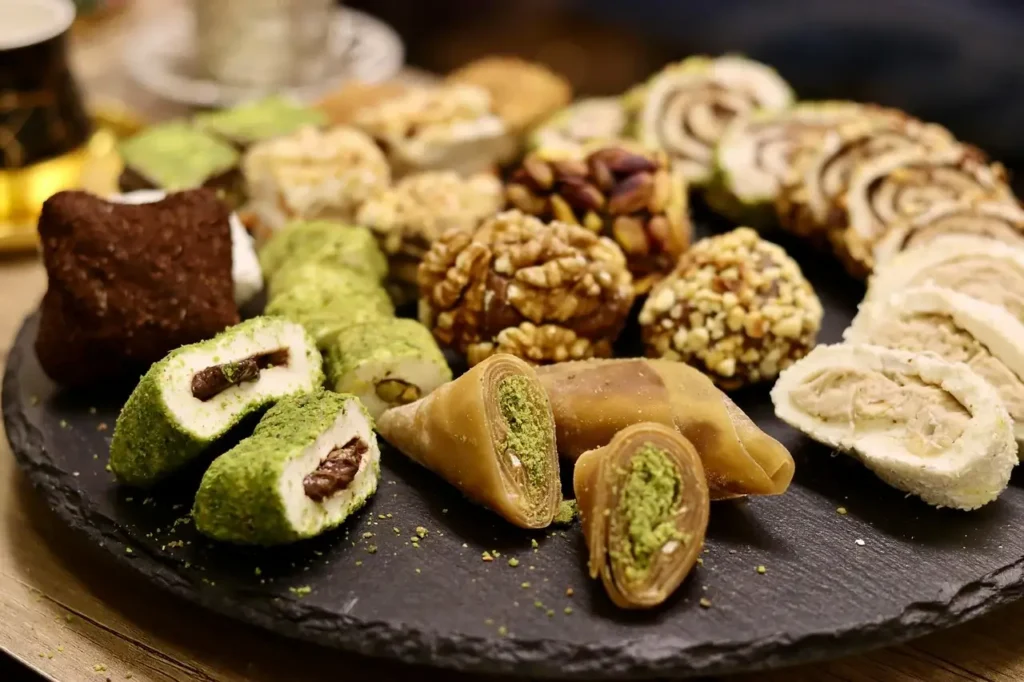
Turkish cuisine is a fusion of Middle Eastern, Mediterranean, and Central Asian flavors, influenced by centuries of empire-building and trade. The result is a rich and diverse food culture with something for every palate.
- Kebabs: Turkish kebabs are some of the most flavorful in the Middle East, made from minced lamb or beef and cooked over open flames. They’re often served with fresh vegetables and pilaf.
- Meze: A collection of small appetizers that range from hummus and baba ganoush to stuffed grape leaves and grilled octopus. It’s a perfect way to sample a variety of flavors.
- Baklava: A beloved dessert made with layers of filo dough, honey, and nuts. It’s sweet, rich, and absolutely decadent.
Why Try It? Turkish cuisine offers a rich variety of flavors that balance the boldness of the Middle East with the freshness of the Mediterranean. The meze is perfect for those who want to experience a wide range of tastes in one sitting.
7. United Arab Emirates: Modern Flavors with Traditional Roots

The UAE blends traditional Arabic dishes with modern influences, creating a dynamic food scene that appeals to both locals and tourists alike.
- Al Harees: A simple but flavorful dish made from wheat and meat, slow-cooked until tender. It’s often eaten during special occasions like Ramadan.
- Shawarma: While shawarma is found throughout the Middle East, the UAE puts its own twist on this beloved street food by adding spices like cinnamon and cardamom to the meat.
- Luqaimat: These sweet, fried dumplings are drizzled with date syrup and sprinkled with sesame seeds, making for the perfect dessert after a savory meal.
Why Try It? Emirati food offers a glimpse into the country’s rich cultural history while embracing modern culinary innovations. Al Harees, often served during important events, offers a deep sense of tradition.
8. Oman: The Subtle Flavors of the Arabian Sea
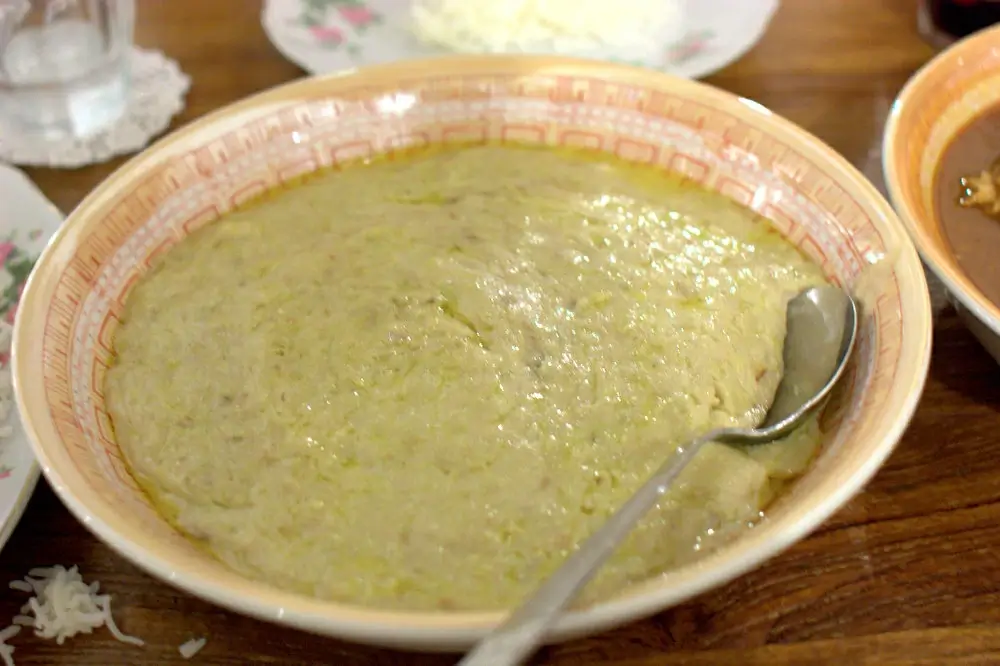
Oman, with its rich coastal heritage, offers a delightful array of dishes that draw heavily from the sea and the region’s natural surroundings. While it may not be as widely known for its food as some of its Middle Eastern neighbors, Omani cuisine is a treasure trove of unique flavors and fresh ingredients. Seafood plays a crucial role, and the use of spices is both subtle and aromatic.
- Mashuai: This traditional Omani dish is a delightful blend of dried tuna, rice, and a mix of spices. It’s often served during special occasions, and the flavor is a perfect example of Oman’s coastal influence, with the saltiness of the tuna complemented by the earthy spices.
- Harees: A wheat and meat porridge similar to the dish served in the UAE, Harees is a simple yet filling comfort food. The meat, usually chicken or lamb, is slow-cooked with wheat to create a smooth, hearty porridge that’s both savory and satisfying.
- Dates and Omani Coffee: Omani coffee, brewed with a blend of spices such as cardamom and saffron, is often paired with fresh dates. This traditional snack is offered to guests as a sign of hospitality and is a quintessential part of Omani culture.
Why Try It? The coastal influence of Oman brings a fresh, understated approach to Middle Eastern cuisine. Mashuai, with its dried tuna, and the comforting taste of Harees, offer a deep connection to the land and sea that define Oman’s culinary traditions.
Exploring Middle Eastern Street Food: Quick Bites and Delicious Delights
The vibrant street food culture across the Middle East adds another layer of excitement to your culinary journey. Whether you’re navigating the bustling streets of Cairo, the markets of Beirut, or the alleys of Istanbul, the smell of sizzling food is always in the air. Street food isn’t just a quick meal—it’s an experience, allowing you to sample authentic flavors in their most accessible and flavorful forms.
- Falafel: These crispy chickpea fritters are a Middle Eastern street food staple. Typically served in pita bread with a variety of fresh toppings like tomatoes, cucumbers, and tahini, falafel is both hearty and satisfying.
- Shawarma: Shawarma is a ubiquitous presence in Middle Eastern street food culture. Marinated meat (often lamb, chicken, or beef) is slowly roasted on a vertical rotisserie and shaved into thin slices. It’s served in pita or flatbread, often with garlic sauce, tahini, and pickles, making for a mouthwatering meal on the go.
- Sfiha: This Lebanese meat pie is often enjoyed as a quick snack. Sfiha is a small, open-faced pastry filled with spiced ground meat, onions, and pine nuts. It’s perfect for a quick bite while exploring the streets.
- Manakeesh: Manakeesh is a flatbread that can be topped with a variety of ingredients, such as za’atar (a herb and spice mix), cheese, or minced meat. It’s often served for breakfast or as a light snack, making it a versatile part of street food culture.
Why Try It? Street food in the Middle East is an essential part of daily life and offers an exciting way to dive into the region’s diverse flavors. Whether you’re eating falafel in Cairo or shawarma in Beirut, you’re tasting a piece of history and tradition that’s as integral to the Middle East as its ancient monuments.
Essential Ingredients in Middle Eastern Cooking
Middle Eastern cuisine is defined by its simple yet vibrant ingredients that burst with flavor. Many of the region’s dishes rely on fresh, seasonal produce, as well as pantry staples that have been passed down through generations. If you’re cooking Middle Eastern food at home, these essential ingredients are your starting point:
- Olive Oil: Used generously in cooking and as a dressing for salads, olive oil is the backbone of many Middle Eastern dishes, providing richness and depth.
- Garlic: Garlic is used in nearly every Middle Eastern dish, adding its signature pungency and flavor to everything from sauces to marinades.
- Lemon: Fresh lemon juice adds a bright, zesty note to many dishes, from salads to stews. It’s also used to balance out the richness of meats and rice.
- Sumac: This tangy, slightly fruity spice is a common ingredient in Middle Eastern cooking, often used to season meats, rice, and vegetables. It adds a unique, lemony flavor.
- Pomegranate Molasses: This thick, sweet-tart syrup made from pomegranate juice is used to add depth to sauces, dressings, and marinades. It’s a key ingredient in many Middle Eastern dishes, adding a touch of sweetness and acidity.
- Za’atar (Thyme, Sesame, Sumac): A versatile spice mix used for everything from seasoning meats to sprinkling on flatbreads. It’s aromatic, earthy, and slightly tangy.
- Tahini: Made from ground sesame seeds, tahini is a key ingredient in many Middle Eastern dips and dressings. It’s creamy, nutty, and adds a rich flavor to dishes like hummus and baba ganoush.
Why It Matters: Fresh, seasonal ingredients are the heart of Middle Eastern cooking. They bring brightness, balance, and flavor to every dish. Incorporating these key ingredients into your own cooking will give you an authentic taste of the region’s culinary traditions.
Conclusion
The Middle East offers a culinary landscape that is as diverse and rich as its history. From the smoky kebabs of Iran to the zesty salads of Lebanon, every dish tells a unique story of culture, tradition, and innovation. As you embark on your food trail through the Middle East, remember that food is more than just nourishment—it’s an experience, a journey, and a celebration of the people who have perfected these dishes over centuries. Whether you’re at a bustling market in Cairo or enjoying a home-cooked meal in Oman, the flavors of the Middle East will leave you craving more.
So pack your bags, bring your appetite, and set out to explore the ultimate Middle East food trail! The flavors of the region await, offering you an unforgettable culinary adventure that will not only satiate your hunger but also deepen your connection to one of the world’s most culturally rich regions.
FAQs: Middle East Food and Culinary Travel
What is the most popular food in the Middle East?
While each country has its own culinary identity, hummus and falafel are widely loved across the region. These iconic dishes are staples in Middle Eastern food culture and offer a delicious introduction to the diverse flavors of the region.
What should I try in the Middle East?
Some must-try dishes include shawarma, falafel, kabsa, hummus, baklava, and mansaf, to name just a few. These dishes provide a well-rounded taste of Middle Eastern cuisine, with a balance of savory, sweet, and tangy flavors.
Is Middle Eastern food spicy?
While Middle Eastern food is not typically spicy in the same way as some Asian cuisines, it is rich in flavor, using aromatic spices like cumin, cinnamon, coriander, and paprika. These spices create depth and complexity without overwhelming heat.
